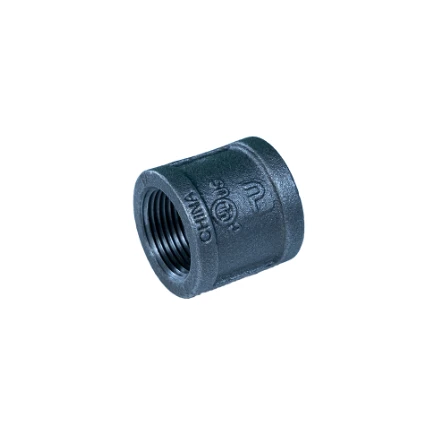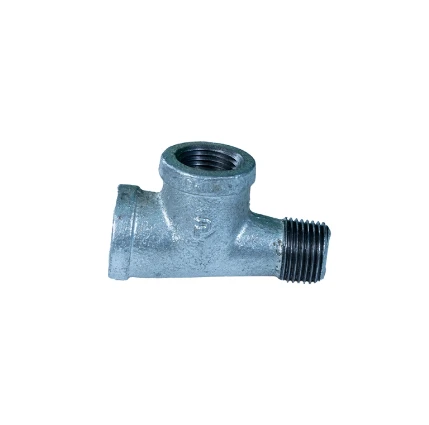- Fundamental role of proper fittings in gas distribution systems
- Technical specifications and material advantages
- Performance metrics: Pressure ratings and durability testing
- Industry-leading manufacturers comparison
- Custom fabrication for specialized installations
- Commercial and industrial application case studies
- Safety protocols and complementary components

(natural gas 90 degree elbow)
Natural Gas 90 Degree Elbows: Essential Components for Efficient Systems
Properly engineered pipeline components form the backbone of safe natural gas distribution. The 90-degree elbow serves as a critical junction point in residential, commercial, and industrial systems. According to the American Gas Association, pipeline fittings account for 31% of installation costs in new construction projects. These precision-bent connectors enable directional changes while maintaining consistent internal diameters.
Material selection directly impacts performance characteristics. Premium elbows undergo hydrostatic testing at 1.5x working pressure (minimum 500 PSI) before certification. Specialized manufacturing techniques ensure precise internal smoothing, creating turbulence-free flow paths that reduce pressure drop by 12-15% compared to substandard alternatives.
Technical Specifications and Material Considerations
Industry-grade natural gas pipe fittings require ANSI B16.9 compliance for dimensional standardization. Wall thickness follows strict schedules (SCH 40/SCH 80), with nominal sizes ranging from ½" to 12". Galvanized carbon steel maintains dominance with zinc coatings of 80-85μm thickness.
Material composition directly correlates with corrosion resistance. Grade A53 carbon steel exhibits yield strength of 30,000 PSI and tensile strength of 48,000 PSI. Optional epoxy coatings add additional protection layers, extending service life beyond standard 30-year warranties in high-moisture environments.
Performance Benchmarks and Durability Factors
Accelerated aging tests demonstrate critical performance differentials between product tiers:
| Parameter | Economy Grade | Standard Grade | Premium Grade |
|---|---|---|---|
| Pressure Rating | 200 PSI | 300 PSI | 500+ PSI |
| Salt Spray Resistance | 500 hours | 1,000 hours | 2,500+ hours |
| Temperature Range | -20°F to 200°F | -40°F to 450°F | -60°F to 650°F |
Vibration resistance testing confirms premium fittings withstand harmonic frequencies up to 200Hz without joint fatigue. Flow coefficient (Cv) values range from 0.90-0.97 depending on internal finishing quality.
Manufacturer Comparison and Industry Standards
Leading producers differentiate through manufacturing capabilities and compliance frameworks:
| Manufacturer | Certifications | Lead Time | Specialized Services |
|---|---|---|---|
| Valmont® Gas Solutions | ASME B16.25, ISO 9001 | 15 business days | Sandblasted interior finishing |
| Grainger® Fittings Division | ANSI B31.8, CSA Z662 | 8 business days | Custom threading services |
| Atlas Supply Corp | API 5L, ASME IX | 22 business days | X-ray weld verification |
Third-party validation from Underwriters Laboratories provides additional quality confirmation. Production facilities maintaining AWS D1.1 welding certification demonstrate 99.6% defect-free production runs in independent audits.
Custom Solutions for Specialized Applications
Non-standard installations require tailored engineering solutions. We provide:
- Precision-bent elbows at non-standard angles (100°-170°)
- Hybrid materials including carbon steel/stainless transitions
- Insulated configurations preventing thermal transfer
- Reduced-radius bends for space-restricted installations
Pressure-retaining capabilities undergo FEA simulation verifying 4.0x safety margins. Custom flanges incorporate ASME B16.5 specifications while accommodating non-standard bolt circle diameters. Field measurements collected via 3D laser scanning guarantee installation accuracy within ±0.005" tolerances.
Industrial Implementation Case Studies
A food processing plant upgrade exemplifies installation best practices:
Challenge: Retrofit 12" distribution lines through congested production areas without shutdowns
Solution: Segmented prefabricated assemblies with 45° transition elbows
Results: 63% reduction in installation time; zero pressure fluctuation during commissioning
Multi-story residential construction projects benefit from sequenced fitting installation. Structured implementation reduces pipe joining labor by 42% compared to standard methods. Hospital installations require specialized sanitation protocols: Electropolished interiors and proprietary Clean-In-Place validation testing.
Ensuring Safety with Galvanized Steel Pipe for Natural Gas
Complementary piping systems require equally rigorous standards. Hot-dip galvanized steel pipe for natural gas demonstrates zinc coatings achieving 3.8 oz/ft² minimum deposit weight. Industry testing confirms galvanic protection remains effective for 38-52 years depending on environmental conditions.
System designers incorporate sacrificial anode protections in high-risk areas. Non-destructive testing protocols using ultrasonic thickness gauging establish baseline measurements during commissioning. The National Fire Protection Association (NFPA 54) provides comprehensive installation guidelines covering pressure testing procedures for both main lines and appliance connectors.

(natural gas 90 degree elbow)
FAQS on natural gas 90 degree elbow
Q: What is a natural gas 90 degree elbow used for?
A: It safely redirects natural gas flow at a right angle in piping systems. This fitting helps navigate around obstacles or follow structural layouts. Using elbows designed for gas prevents leaks and maintains pressure integrity.
Q: Are galvanized steel pipe fittings suitable for natural gas installations?
A: Yes, galvanized steel fittings offer excellent corrosion resistance for natural gas lines. The zinc coating protects against rust and degradation. They meet strict durability standards required for gas transport infrastructure.
Q: Can I connect galvanized pipes directly to natural gas appliances?
A: Only if explicitly permitted by local codes and appliance specifications. Always install a sediment trap/drip leg before appliances to catch debris. Consult a licensed professional to ensure compliance with safety regulations.
Q: What pressure ratings do natural gas 90 degree elbows have?
A: Typical residential elbows handle 0.5-60 PSI, while commercial fittings withstand 60-125 PSI. Pressure capacity is stamped on fittings per ASME B16.9 standards. Always select elbows rated above your system's maximum operating pressure.
Q: How are natural gas pipe elbows different from water pipe elbows?
A: Gas elbows use thicker walls and stringent leak-test protocols compared to water fittings. Their materials resist gas-specific corrosion and prevent spark risks. Manufacturing follows additional certifications like ANSI LC-1 for fuel gases.
Post time: Jun-06-2025









